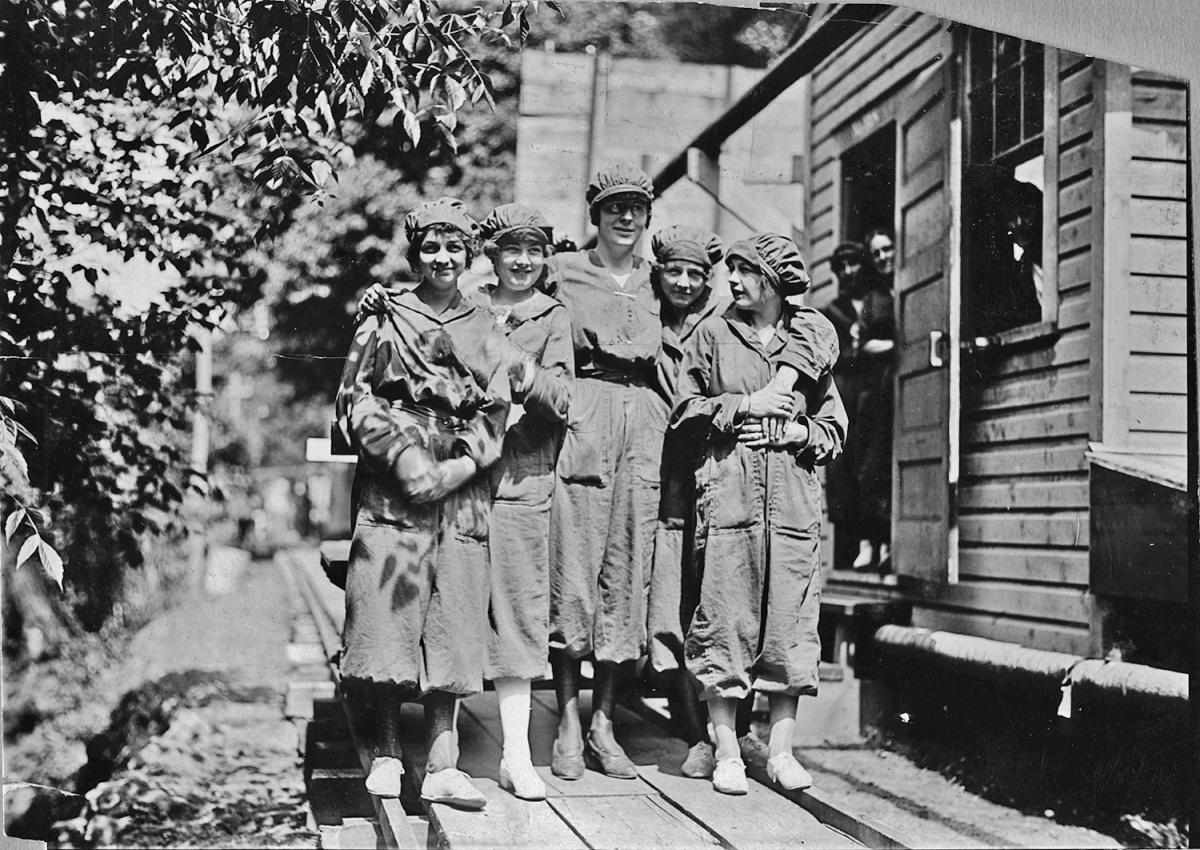Do you ever wish someone had recorded your grandmother’s stories before she passed away?
Between 1953 and 1984 staff at the Hagley Museum did just that, conducting some 200 oral history interviews with individuals who lived near the Brandywine in the early twentieth century. Many had either worked for the DuPont Company or had a close relative who did. The interviewees delved into topics such as their work tasks, the clothes they wore, the houses they lived in, the games they played as children, and their attitudes toward their employers. Together, the interviews provide not only a nostalgic and often entertaining glimpse into the lives of Delawareans, but they also serve as an invaluable source for the cultural history of the working class, recorded in the workers’ own voices and giving a perspective that is all too often lost in surviving written records.

Bloomer girls pause for a photo in 1918, Hagley Digital Archives.
The interviews have been digitized and posted to our digital archives. Library staff have completed a small pilot project to sync older typewritten transcripts with the audio recordings to make the oral histories more accessible to researchers. Featured below are a couple of my favorite stories to emerge thus far from this ongoing project:
Helen Edwards: DuPont Bloomer Girl
Bored at her office job in downtown Wilmington, Helen Edwards thought the powder yards would bring more interesting work and better pay. After seeing a newspaper advertisement for DuPont Co. soon after the United States entered World War I in the spring of 1917, she and a friend showed up at the front gates and were hired immediately.
She and her fellow female workers called themselves the "Bloomer Girls" because of the pants they wore while working. In her 1984 and 1986 interviews, Edwards describes packing ballistite rings into canisters and also provides humorous details that would never be found in official corporate documentation - for instance a singing government inspector who made sure to stop by whenever one of the women had made a cake to share or the squirrels that stole the walnuts she and coworkers had gathered during lunch breaks.
When Armistice Day and the end of the war finally arrived on November 11, 1918, Edwards and her coworkers dropped everything and took the bus to downtown Wilmington to join the celebrations, not even bothering to change out of their work bloomers on a cold November day. Listen to her describe the day in the clip below:
Click here to listen to Edwards’ interviews in their entirety.
Walter Aurand: Quality Control Specialist to Bootleggers
My favorite anecdote from the oral histories may be the unexpected confession of Walter Aurand, who found himself providing chemical analysis during Prohibition for the largest bootlegging syndicate on the East Coast. While working in Connecticut, Aurand, who had earlier trained in chemistry at the University of Delaware and had worked at the DuPont Experimental Station during World War I, was approached by a stranger and offered a job testing liquor from incoming shipments to the syndicate.
The man assured Aurand that he would be doing nothing illegal and that he could virtually name his own salary. Aurand agreed and over the next twelve years periodically tested samples, once even catching a shipload of synthetic rum. The money was excellent; as he describes it, "they'd pay me just like it was money rolling off a tin barrel."
Listen to his story here:
Listen to all of Mr. Aurand’s interview here.
Click here to browse all of the oral histories from this collection in the Hagley Digital Archives.
Angela Schad is a Digital Archives Specialist at the Hagley Museum and Library.
